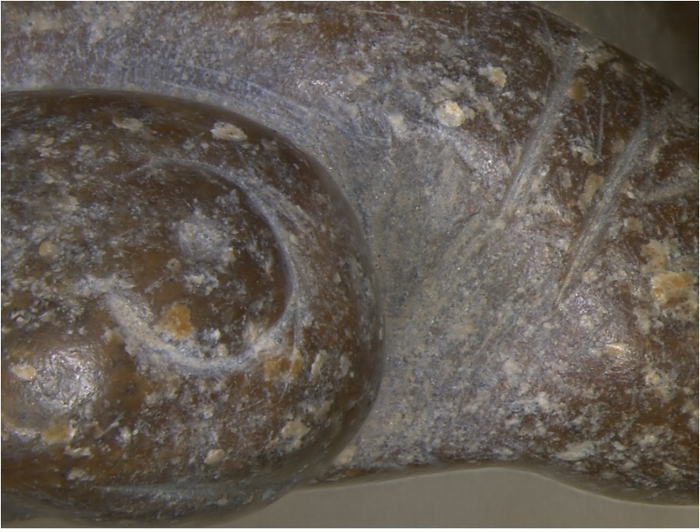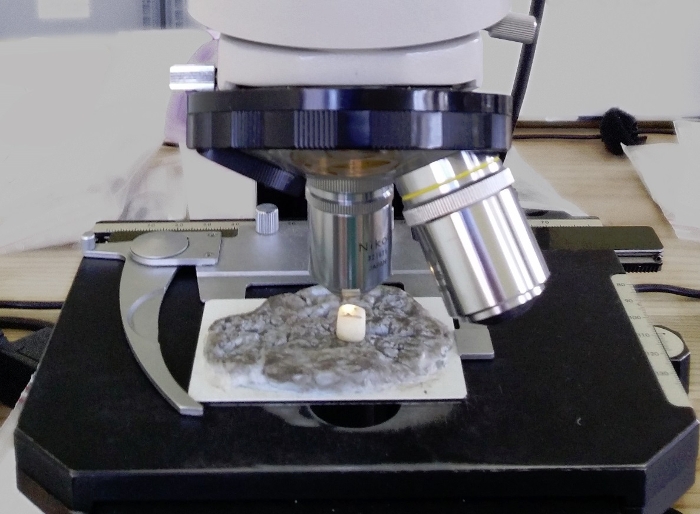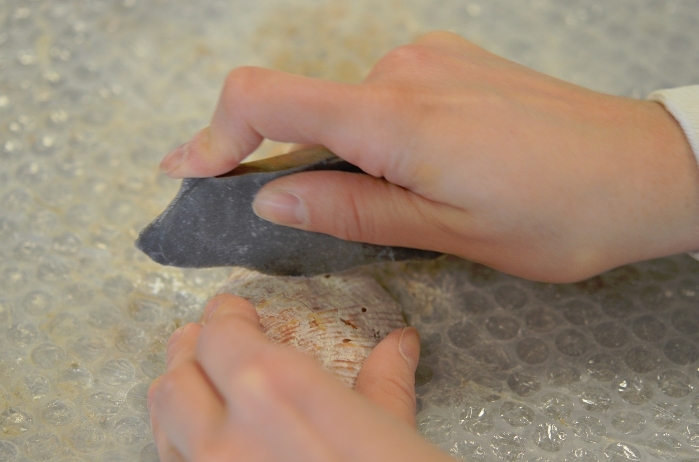Research project
Indigenous adornment in a pan-Caribbean perspective
the production, use and exchange of bodily accoutrements through the lenses of the microscope
- Duration
- 2015 - 2019
- Funding
-
 Spinoza Prize awarded to Prof. dr. Corinne L. Hofman in 2014
Spinoza Prize awarded to Prof. dr. Corinne L. Hofman in 2014
- Partners

How were bodily ornaments produced, used and exchanged in the indigenous Caribbean? Do such patterns change from the beginning to the end of the Ceramic Age (400 BC – ca. AD 1500)?
Short abstract
Amerindian societies are often portrayed as profusely adorned with seeds, glass beads and feathers. What about the communities that inhabited the Antilles and northern South America in the pre-Colonial period? Beads and pendants are often recovered from archaeological sites. This PhD research aims to closely examine these items to assess how they were produced, used, and exchanged in this pan-Caribbean region.
Project description
This research focuses on the biographies of ornaments in the pre-Colonial Caribbean region, encompassing the stages of conceptualization, acquisition of raw materials, production, use, exchange and deposition.
The main focus will be exploring biographical patterns for ornaments in the Lesser and Greater Antilles during the Ceramic Age period (400 BC – ca. AD 1500). The comparison between artefact biographies for multiple case-studies will allow a critical assessment of previous ideas regarding large-scale interactions within and between these regions.

The research aims to generate a new understanding of interactions in a multi-scalar fashion: from micro-regional, to inter-island, and finally to pan-regional networks that would have involved not only the trade of goods, but also the persistence and sharing of ideas and ways of doing things.
Social relevance
Bodily ornaments are commonly found in archaeological contexts and abound in Caribbean museums. Rather than being pieces to be randomly glued together in exhibitions as if they formed a whole (i.e. a necklace), this research will focus on the people-mediated processes that have led to the objects’ shapes, traces and damages. This will help incorporate a human aspect that goes beyond modern understandings of “jewellery” and aesthetics.

Scientific relevance
The presence and circulation of bodily ornaments across the Caribbean during the Ceramic Age (400 BC – AD 1492) has been the focus of substantial archaeological research. However, iconographic depictions and the exotic character of lithic raw materials have predominated as key evidence in elucidating the role of ornaments in culture interaction.

Not much is known regarding their technologies of production and modes of usage. The present research will produce technological and use-wear information for different collections in the region, seeking to contrast the new data to ideas generated by prior studies.
Why Leiden University?
The Faculty of Archaeology has strong research groups focused on the Americas, especially the Caribbean. This provides opportunities for constant discussion and direct interaction with other archaeological projects and debates taking place in the region. In addition, collaboration with research conducted in the NEXUS 1492 project will provide access to the analyzed collections.
The Laboratory for Material Culture Studies houses microscopic equipment and reference collections which are crucial for carrying out the proposed research. The Material Culture Group has also been investigating biographies of ornaments and this expertise will serve as a platform for discussion into research methods and interpretation.
Material & Methods
Ornaments (beads, pendants, earplugs, etc.) will be studied through microwear analysis. They are made of a variety of lithic materials, shells, bone, coral, and ceramics, encompassing from simple disc beads to complex zoo- and anthropomorphic pendants.
Through microscopic observation of wear-traces left on artefact surfaces (magnifications of 10x to 500x), it is possible to assess tools and techniques used in the production of an artefact, alongside making estimations of its mode and length of use.
An experimental programme will be conducted in order to recreate traces observed on archaeological ornaments. The experiments will centre on surface treatments and drilling techniques making use of Caribbean raw materials as toolkits.
